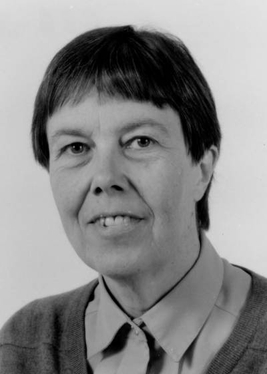Susan Brown (mathematician) facts for kids
Susan North Brown (born December 22, 1937 – died August 11, 2017) was a brilliant mathematics professor at University College London (UCL). She was also a top expert in a field called fluid mechanics, which is the study of how liquids and gases move.
Quick facts for kids
Susan Brown
|
|
|---|---|
 |
|
| Born | 22 December 1937 Southampton
|
| Died | 11 August 2017 (aged 79) London
|
| Alma mater | University of Oxford (BA) (1959) University of Oxford and University of Durham (DPhil) |
| Scientific career | |
| Fields | Mathematics Fluid Mechanics |
| Institutions | |
| Doctoral advisor | George Frederick James Temple |
| Doctoral students | Peter Daniels |
Contents
Susan Brown's Early Life and Education
Susan Brown studied mathematics at St Hilda's College, Oxford. After getting her first degree, she continued her studies at Oxford for two more years. She focused on theoretical fluid mechanics, which uses math to understand how fluids behave.
In 1964, she earned her DPhil (a high-level research degree, like a PhD) from the University of Durham. During her studies, she also taught as a temporary lecturer at both Durham and Newcastle University.
Her Career at University College London
In 1964, Susan Brown started working at UCL as a lecturer. This began her long and important connection with the university. She quickly moved up in her career. In 1971, she became a Reader, which is a senior academic position.
Then, in 1986, she was made a full Professor. This was a huge achievement! Some people at UCL believed she was the first woman in the UK to become a mathematics professor. However, another woman, Joan E. Walsh, became a math professor at the University of Manchester in 1974.
What Did Susan Brown Research?
Susan Brown was known as an amazing teacher and had a worldwide reputation for her research. She worked closely with her UCL colleague, Keith Stewartson, who also joined UCL in 1964.
Together, they published 29 research papers. They were pioneers in developing something called 'triple-deck' theory. This theory helped solve long-standing questions about how air flows around the edges of things, like airplane wings. This research was very important for understanding aerodynamics.
Another area where Susan Brown was famous was her work on "critical layers." She studied how things like stickiness (viscosity) and complex behaviors (nonlinearity) affect these layers. Her work also helped explain natural events, like how fast-moving air currents (atmospheric jets) behave.
When Did Susan Brown Pass Away?
Susan Brown passed away on August 11, 2017, in London. She was 79 years old.

